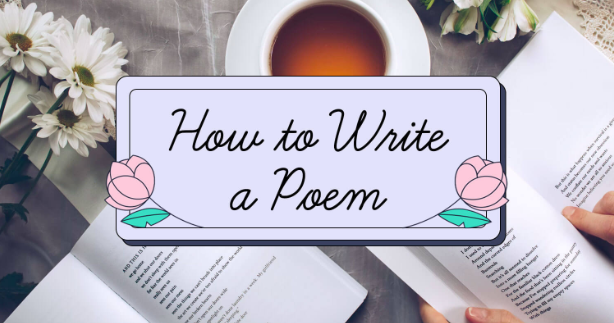Meter definition poetry is a way of writing poems using a special beat or rhythm. When you read poems with meter, you can almost feel a song inside the words. Poets use meter to make their lines sound nice and smooth. Each line of poetry has a pattern, and that pattern comes from the way the words are stressed, like a drumbeat. Meter helps poems move in a musical way, even if they don’t rhyme. It is like a secret code in the poem that tells us how to read it. This blog will help you learn about meter definition poetry in very easy words. You don’t need to be a grown-up or a poetry expert to understand it. We will walk you through all the basics so you can enjoy poems more and maybe write some too!
In meter definition poetry, the rhythm is made by syllables. Syllables are the parts of a word you say with one beat. For example, the word “poetry” has three syllables: po-e-try. Some syllables are strong (called stressed) and some are soft (called unstressed). Poets mix these stressed and unstressed syllables to make patterns like iambic, trochaic, and more. These are called meters. Each meter gives the poem a different feel. For example, iambic meter feels soft at first and then strong — like a heartbeat. When poets use meter, they help the reader feel the mood, the speed, and the emotion of the poem. Meter can make a poem feel happy, sad, slow, or fast. That’s why it’s important in poetry. Even if it sounds tricky now, don’t worry! By the end of this blog, you will understand meter definition poetry easily and have fun with it too.
What Does Meter Definition Poetry Really Mean?
Meter definition poetry means writing poems with a pattern in how the words sound. In this kind of poetry, some words sound strong and others sound soft. These strong and soft beats make a rhythm, like music. This rhythm is called the “meter.” Poets use meter to help the poem flow and sound beautiful. When you read a poem with meter, you might feel like you’re reading a little song. Each line follows a beat, and that beat keeps going again and again. So, meter is like a secret rhythm that makes the poem special. Even if a poem does not rhyme, the meter still makes it fun to read. That’s why meter definition poetry is so cool and easy to love!
Why Do Poets Use Meter in Their Poems?
Poets use meter in their poems to help the words sound smooth and nice. Meter gives poems a beat, just like a song. When people read poems with meter, it feels better to read and listen. It also helps show feelings. A fast meter can make a poem feel happy or excited. A slow meter can make it feel sad or quiet. Meter also helps make poems easier to remember. That’s why old stories and songs were written with meter. Poets pick a meter that matches their poem’s mood. It’s like picking the best beat for a dance. With the right meter, the poem comes to life. So meter helps make poems stronger, more fun, and full of feeling.
Easy Types of Meter in Poetry Explained for Kids
There are many types of meter in poetry, but here are some easy ones. First is iambic meter, which sounds like “da-DUM,” with the soft beat first. It’s used a lot in poems and even plays. Next is trochaic meter, which sounds like “DA-dum,” with the strong beat first. It feels a little faster and more jumpy. Another one is anapestic meter—it goes “da-da-DUM,” like a tiny drumroll. And then there’s dactylic meter, which goes “DA-da-dum.” These names might sound hard, but they are just ways to show how words beat in a line. Once you clap or tap along, you’ll start hearing the pattern easily. It’s like a fun music game inside the poem!
How to Hear the Beat in Meter Definition Poetry
Hearing the beat in meter definition poetry is fun and easy. First, read the poem out loud. Then listen to which words sound strong and which sound soft. Try clapping your hands or tapping your fingers with each beat. When you do this, you can feel the rhythm. A poem with meter will have a pattern that repeats. For example, some lines go “soft-strong, soft-strong,” and that is called iambic meter. You can even march or sway to the beat like music. If the rhythm feels steady and smooth, then you’re hearing the meter! Keep practicing with short poems. Over time, your ears will get really good at finding the meter, just like finding the beat in your favorite song.
Fun Examples of Meter Definition Poetry You’ll Love
Let’s look at some fun poems that use meter! A very famous one is by William Shakespeare. He wrote lines like “Shall I compare thee to a summer’s day?” This line uses iambic meter, where every second beat is strong. Another fun one is “’Twas the night before Christmas,” which uses anapestic meter. It goes like “da-da-DUM, da-da-DUM.” Even nursery rhymes like “Jack and Jill went up the hill” have meter. That one is a mix of different beats! Reading these out loud will help you hear the meter. You can try writing your own too. Just clap the beat and make up lines that match it. Poetry with meter is like writing music with words!
Meter vs. Rhythm in Poetry – What’s the Difference?
Meter and rhythm may sound like the same thing, but they are a little different. Meter is the fixed pattern of beats in a poem. It repeats in every line, like a rule the poem follows. For example, iambic meter always has “soft-strong” beats in a row. Rhythm, on the other hand, is how the poem sounds when read out loud. It can be fast, slow, bouncy, or smooth. Rhythm can change, but meter stays the same in a poem. So meter is the plan, and rhythm is the feeling. Think of meter like a steady drum, and rhythm like the way you dance to it. Both are important in poetry to make it sound fun and full of life.
Conclusion
Now you know that meter definition poetry is all about beats and rhythm in a poem. It helps the poem sound smooth, fun, and full of feelings. Meter uses a pattern of strong and soft sounds in each line. Poets choose different types of meter to make their poems more exciting or calm, depending on how they want the reader to feel.
Learning meter may seem tricky at first, but with a little practice, it becomes easy and fun. Try reading poems out loud, tapping your fingers, or clapping along to find the beat. Once you start feeling the meter, poems will sound like music to your ears. Poetry becomes more alive with meter—and now you can enjoy it even more!
FAQs
Q: What is meter in poetry?
A: Meter is the pattern of strong and soft beats in a poem that gives it rhythm and flow.
Q: How can I find the meter in a poem?
A: Read the poem out loud and listen to which words sound stronger. Clapping or tapping helps too!
Q: Is meter the same as rhyming?
A: No, meter is about the beat of the words, while rhyming is when words sound the same at the end.






